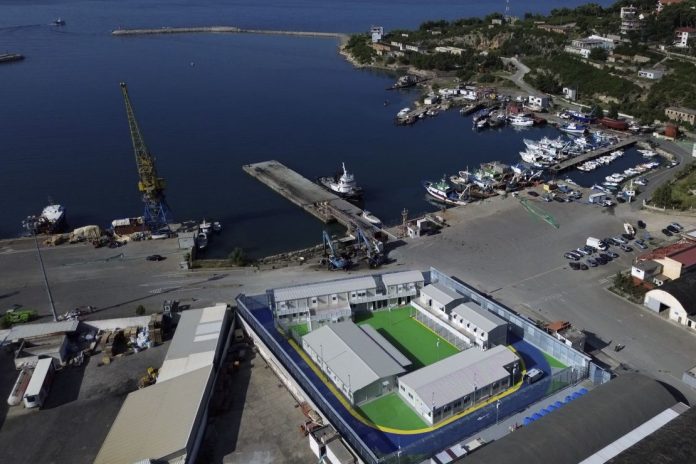Italian authorities said on Friday they were transferring 40 migrants without permission to stay in the country to Italian-run migrant detention centres in Albania. It appears to be the first time a European Union country has sent rejected migrants to a country outside the EU that is neither their own nor the country they passed through on their journey, ABC News reported.
Italian media reported that the migrants left the Italian port of Brindisi. The Italian government did not give their nationality or other details.
The migrants will be held in Italian-built and operated migrant centres in the port of Shengjin, 66 kilometres (40 miles) northwest of the capital Tirana, and in Gjader. They were built to handle asylum requests for migrants intercepted by Italy in the Mediterranean Sea. But since they opened in October, Italian courts have barred authorities from using them, and small groups of migrants have been returned to Italy.
It is unclear how long rejected asylum seekers can stay in Albania. In Italy, they can be detained for up to 18 months pending deportation.
Last month, Italy’s national oriented government, led by Prime Minister Giorgia Meloni, approved a decree that expanded the use of Albanian asylum fast-track centres to include detention of rejected asylum seekers.
While the announcement was in line with a recent EU Commission proposal that would allow EU countries to establish so-called “return hubs,” the proposal has not yet been fully approved. Migrant rights organisations and lawyers say it violates the right to asylum and sets a dangerous precedent.
Migration experts consulted by The Associated Press say it is unclear how legal Italy’s action is and that it is likely to be challenged in court.
“They need to show they are doing something with this incredibly expensive structure,” Meghan Benton of the Migration Policy Institute said. Speaking from Toulouse, France, Benton said other EU countries are interested in doing the same, including the Netherlands and Uganda.
Francesco Ferri, a migration expert from Action Aid who was among a group of non-governmental organisations and Italian lawmakers who visited Albania to track the movement of migrants, said there was no legislation in Italian law, EU law or the Albania-Italy agreement that would allow rejected asylum seekers to be deported directly from Albania, making the purpose of the movement unclear.
“For us it is unacceptable,” Ferri said.
The Albanian centres opened in October, but they are barely operational because of legal obstacles and widespread opposition from human rights associations, which say they violate international laws and put migrants’ rights at risk.
An agreement between Italy and Albania signed in November 2023, worth about 800 million euros over five years, allows up to 3,000 migrants intercepted by the Italian coastguard in international waters to be granted asylum in Albania each month and screened for asylum in Italy or repatriation.
Italy has agreed to accept those migrants who will be granted asylum, while those whose applications are rejected face deportation directly from Albania.
The first three groups of 73 migrants transferred there in October, November and January spent only a few hours in Albania and were returned to Italy after Italian judges refused to confirm their detention in the non-EU country.
This year, 11,438 migrants have landed on Italian shores, down from 16,090 who arrived during the same period last year. Most came from Bangladesh, followed by Syria, Tunisia and Egypt, according to Italy’s interior ministry.
